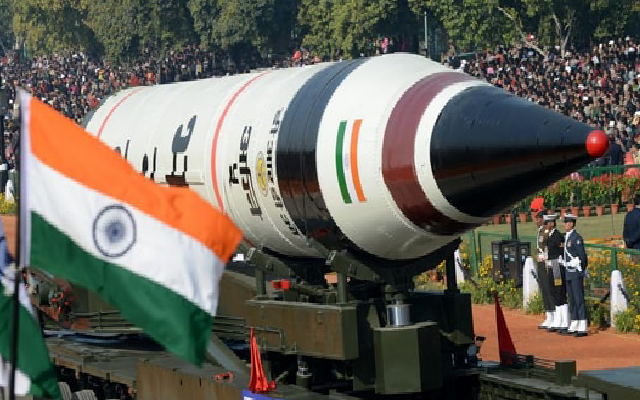Three years ago, an attempt was made by Pakistan to advance its missile technology by employing the Multiple Independently Targetable Re-entry Vehicle (MIRV) system on the Shaheen III missile, which has a range of 2,750 km. However, according to top officials from DRDO (Defence Research and Development Organisation), the endeavor proved unsuccessful.
On a recent Monday evening, India conducted a test launch of the Agni-V missile, covering a distance exceeding 3,000 km. Despite the missile’s potential range of 5,000 km, this test involved the deployment of three MIRVs. The name “Agni” signifies the fiery re-entry of the missile’s warheads into the atmosphere, resembling a blazing fireball due to friction, with each warhead hitting the ground separately, approximately 200 kilometers apart. The success of the MIRV technology relies heavily on the warheads’ re-entry phase, necessitating the use of carbon composites to prevent disintegration.
With India having previously tested the K-4 submarine-launched ballistic missile with a range of 3,700 km, the successful Agni-V test underscores India’s readiness to deter potential adversaries. Efforts are already underway to develop the next generation of versatile missiles, known as the Agni-P series.
Pakistan and China are likely to view India’s Agni-V test as a factor in their strategic calculations, particularly regarding Pakistan’s reluctance to sign the Fissile Material Cut-off Treaty (FMCT) due to perceived disparities in conventional force levels with India. However, the primary objective behind India’s MIRV-equipped Agni-V is to deter potential threats from expansionist China, particularly in light of historical tensions stemming from China’s occupation of Tibet in 1950.
In response to China’s rapid development of intermediate-range nuclear ballistic missiles, India’s decision to deploy MIRV-equipped Agni-V missiles is strategic. This move renders interception by anti-missile shields virtually impossible due to the varying velocities and separate targets of each nuclear warhead.
Despite the issuance of NOTAMs (Notice to Airmen) for further test launches on March 15-16, sources indicate that no additional tests are planned at present. Project handlers have deemed the objectives achieved, and attention has shifted to analyzing data collected by India’s ballistic missile tracker, INS Dhruv, to assess trajectory and make any necessary operational adjustments. Mission Divyastra is thus declared a success.
Read More :

















